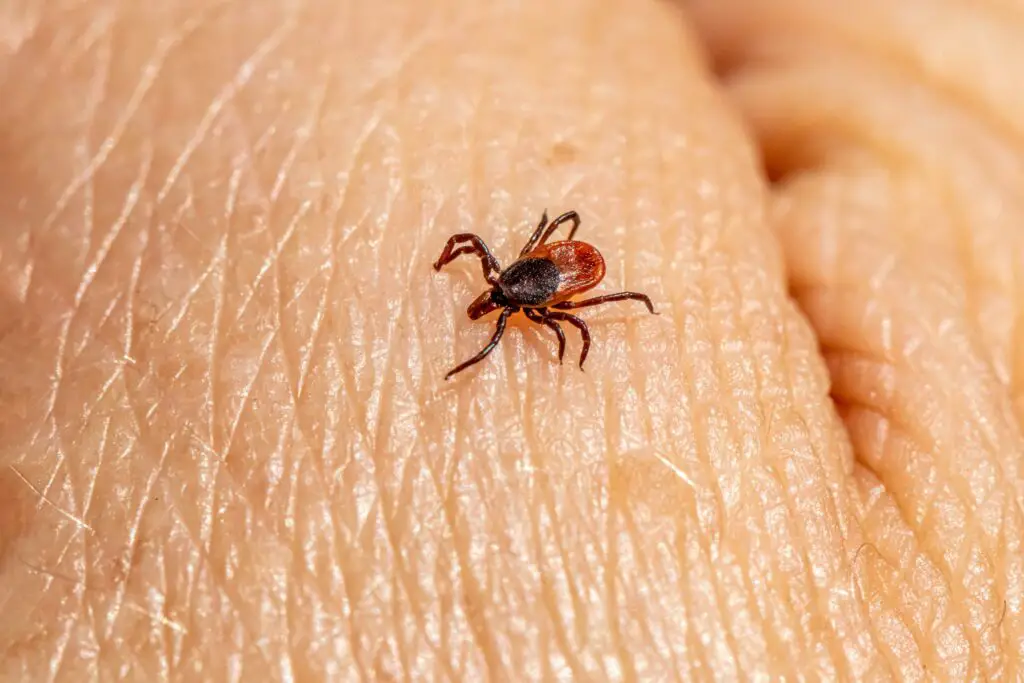Nature is the home to an incredibly versatile array of species, but ticks are definitely one of those that we tend to avoid at all costs.
These tiny arachnids, that are related to spiders, mites, and scorpions, are in fact parasites that survive by attaching themselves to larger animals and feeding on their blood. Humans aren’t spared either. Sadly, these insects carry harmful bacteria that can spread disease to people.
Sadly, tick-borne diseases are at an all-time high, with about 50,000 cases reported each year, and far more going unreported.

There are different types of ticks, and unfortunately, they sometimes find their way to people’s homes. The types most commonly found in homes are the black-legged tick, the dog tick, and the brown dog tick.
- Black-legged Ticks – known as deer ticks, these ticks are typically brown or black in color and have a flattened, oval-shaped body. They are commonly found in wooded areas and can transmit Lyme disease.
- Dog Ticks are larger and can range in color from brown to reddish-brown. They have a tough, shield-shaped body. Dog ticks can transmit diseases such as Rocky Mountain spotted fever.
- Brown Dog Ticks are brown in color and have a slender body.
Although the tick season is between March and October, or sometimes longer, we should be wary of this insects all year round. In fact,if beaten by a tick, a person can develop symptoms even after two or three months.

The bite itself isn’t painful and can cause swelling, itchiness, blistering, and bruising. The bad thing is that ticks also carry and transmit severe diseases, most commonly Lyme disease, as well as Rocky Mountain spotted fever, ehrlichiosis, and babesiosis.
Initially, Lyme disease develops as a circular red ‘bull’s eye’ rash around the site of a tick bite. However, not everyone gets a rash and you should also watch out for a flu-like illness with fever, headache, tiredness and general aches and pains.
The best way to prevent being bitten by a tick is to avoid tall grasses and areas where ticks thrive (such as moorlands and woodlands), especially during the warmer months.
In case you do get bitten, you should remove the tick as soon as possible in order to prevent infections.

These are some of the ways of safe removal.
- Use fine-tipped tweezers: Use clean, fine-tipped tweezers to grasp the tick as close to the skin as possible.
- Pull gently: Apply steady upward pressure, being careful not to squeeze or crush the tick. Aim to remove the tick in one smooth motion without twisting or jerking. Twisting or jerking can cause the tick’s head to break off and stay inside the skin, where it can still transmit disease.
- Clean the area: After removing the tick, clean the affected area with soap and water or an antiseptic solution. Monitor the site of the bite for any signs of infection or a rash, and consult a healthcare professional if necessary.

If by any chance ticks find their way into your home, take immediate action in order to prevent infestation. Most times, ticks are brought into your home in case they stick on your clothes or onto your pets.
- Isolate the area: If you have identified the presence of ticks in a specific area, keep pets and children away from that space.
- Wear protective gear: Put on gloves and a long-sleeved shirt to protect yourself from potential tick bites.
- Clean the area: Clean the area where you found the tick. If it is in bedding, wash the sheets. Inspect the area to ensure there are no more ticks that are present. Dispose of the tick by either flushing it down the toilet or sealing it in a container or ziplock bag before placing it in the trash.
Cherished Object That Drastically Altered Our Childhood

Because they provide a fascinating look into the development of writing instruments and office supplies, vintage pencil sharpeners have a unique place in nostalgic hearts. These recognizable tools, which were formerly commonplace in offices and classrooms all across the world, have left their mark on the development of writing and creativity.

Historical Sources
When the first manual sharpeners were created in the early 1800s, pencil sharpeners came into existence. During the Industrial Revolution, graphite pencils had grown in popularity, and these basic hand-cranked tools were created to sharpen them.
Design and functionality evolution
Pencil sharpeners changed over time, reflecting improvements in manufacturing and technology in both form and function. Electric sharpeners, which offered more speed and accuracy, replaced the early manual ones in the middle of the 20th century. Additionally, pencil sharpening has become more convenient for professionals and students on the go with the advent of portable sharpeners.
Use in Real Life
Old-fashioned pencil sharpeners were essential for keeping pencils sharp and functional, which allowed for accurate and fluid writing or sketching. These machines were essential for sharpening pencils to the ideal point and improving the quality of written or drawn work in classrooms and artist studios.
Meaning in Culture
Education and creativity are closely linked to the cultural practice of using old-fashioned pencil sharpeners. The sound of sharpened pencils in schools has come to represent work and learning. Sharpeners are vital tools for everyone involved in the creative process, as both writers and artists depend on them to sustain their creative flow.
Craftsmanship’s Legacy
Because they are made with greater care and longevity than their contemporary plastic equivalents, vintage pencil sharpeners are highly prized. Constructed from robust materials like metal or cast iron, these sharpeners were designed to last years of usage and eventually turn into treasured heirlooms that are handed down through the generations.
Contemporary Resurgence
Traditional pencil sharpeners have become less common due to modern technology, since mechanical or electric equivalents have taken their place; nonetheless, collectors and enthusiasts are becoming more interested in historical types. Vintage pencil sharpeners are in demand these days due to their retro appeal and nostalgic charm; they look great on desks and shelves as mementos of a bygone era.
In conclusion
Antique pencil sharpeners are symbols of a rich past of artistry, ingenuity, and learning beyond just useful tools. These classic tools, which stand as reminders of the lasting value of analog craftsmanship in a digital age, also serve as emblems of a bygone period that foster appreciation for the trade of writing and drawing.



Leave a Reply